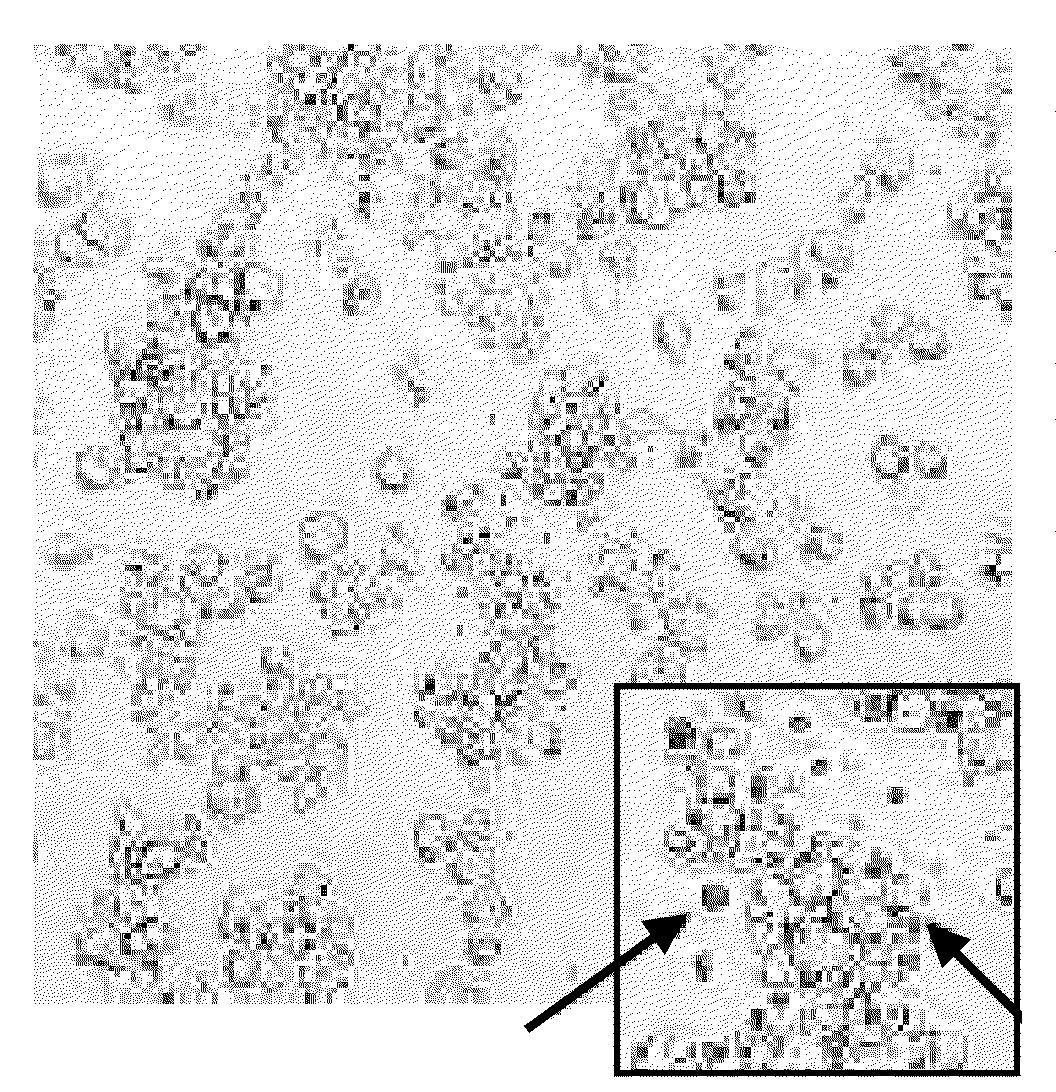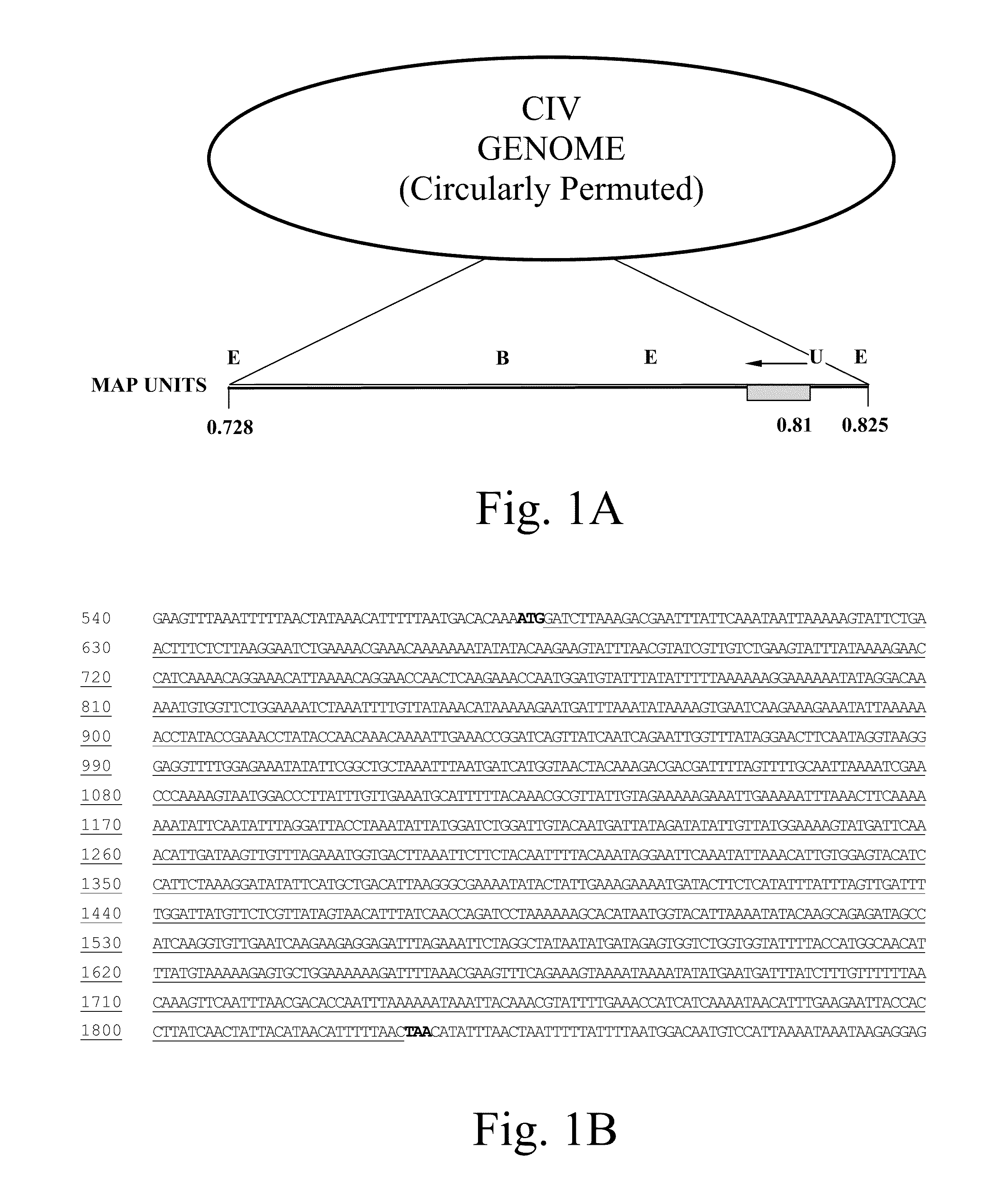Use of Iridoptin to Induce Toxicity in Insects
a technology of iridoptin and insect cells, applied in the field of insect cell induction by protein engineering, can solve the problems of increasing the dose of iridoptin, reducing the effect of eradication programs and chemical control, and billions of dollars of agricultural damage, so as to reduce disease transmission, increase agricultural productivity, and induce toxicity in targeted insects
- Summary
- Abstract
- Description
- Claims
- Application Information
AI Technical Summary
Benefits of technology
Problems solved by technology
Method used
Image
Examples
examples
[0054]By conducting tests of iridoptin for apoptosis activity, inhibition of host protein synthesis in cell culture, and mortality in aphids, it has been shown that iridoptin, the product of the modified istk gene from CIV, induces a very high level of apoptosis in more than 90% of treated insect cells, inhibits host protein synthesis, and kills 63% of aphid populations over control treatments. These data strongly suggest that iridoptin will have toxic or inhibitory effects against other insects, including the cotton boll weevil, lygus bug, the whitefly, and noctuids.
[0055]Alternate applications of this invention include using the DNA segment coding for iridoptin to engineer and produce: (i) cotton and other crop plants resistant to aphids, boll weevils, lygus bugs, the whitefly, noctuids and other insect pests, (ii) microorganisms for controlling agricultural pests as well as plant, animal, and human disease vectors and household pests, and (iii) large amounts of iridoptin for dire...
PUM
| Property | Measurement | Unit |
|---|---|---|
| RI | aaaaa | aaaaa |
| Δ | aaaaa | aaaaa |
| Δ | aaaaa | aaaaa |
Abstract
Description
Claims
Application Information
 Login to View More
Login to View More - R&D
- Intellectual Property
- Life Sciences
- Materials
- Tech Scout
- Unparalleled Data Quality
- Higher Quality Content
- 60% Fewer Hallucinations
Browse by: Latest US Patents, China's latest patents, Technical Efficacy Thesaurus, Application Domain, Technology Topic, Popular Technical Reports.
© 2025 PatSnap. All rights reserved.Legal|Privacy policy|Modern Slavery Act Transparency Statement|Sitemap|About US| Contact US: help@patsnap.com



